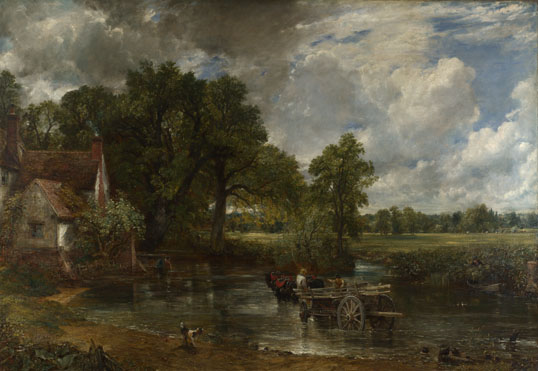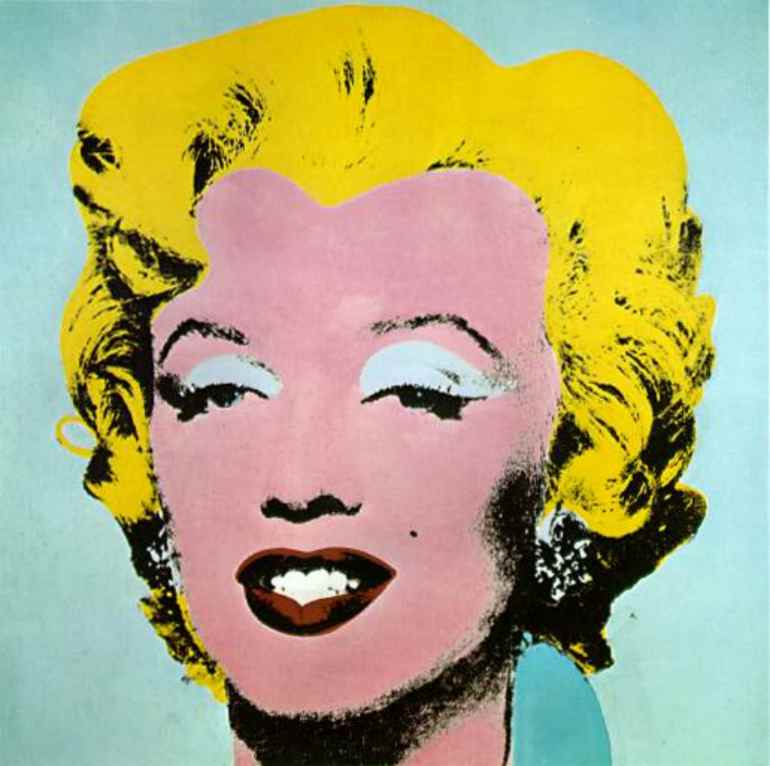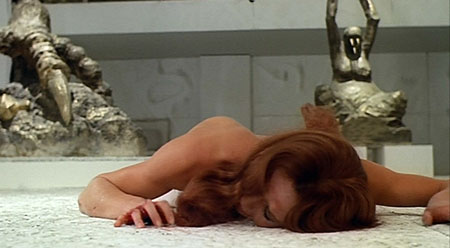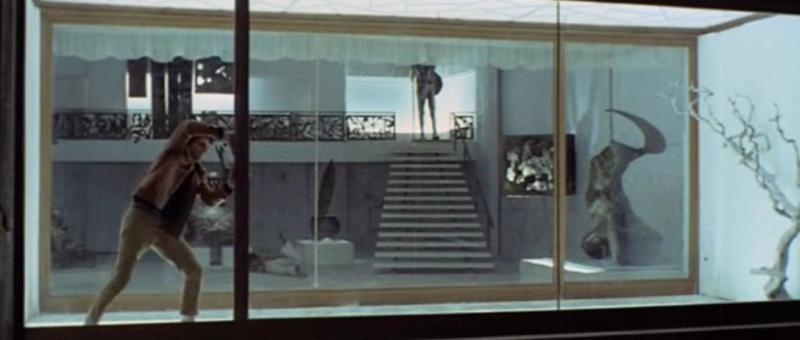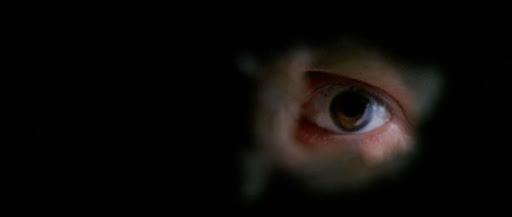Found a good article here by Lars. A. Bratterberg on Johannes Itten, the Swiss designer and theorist and important figure of the Bauhaus movement in the early 20th century. can be seen here
//
Colour Theory, Design, Johannes Itten
//
The research of Johannes Itten is important and should be understood by design practitioners who wish to employ contrast of colour to evoke a desired reaction in their design’s onlooker.
Colour is one of the elements of design; “[it] can make designs more visually interesting and aesthetic, and can reinforce the organization and meaning of elements in a design” (Lidwell, Holden, Butler, 2003). One of the more effective ways to use colour as an element is through exercising contrast. When in design, contrast illustrates an element in opposition. This essay will examine how the research and teachings of Johannes Itten aids practitioners to consciously make use of contrast in design. The examination will progress through looking at Itten’s seven contrasts.
Colour is one of the elements of design; “[it] can make designs more visually interesting and aesthetic, and can reinforce the organization and meaning of elements in a design” (Lidwell, Holden, Butler, 2003). One of the more effective ways to use colour as an element is through exercising contrast. When in design, contrast illustrates an element in opposition. This essay will examine how the research and teachings of Johannes Itten aids practitioners to consciously make use of contrast in design. The examination will progress through looking at Itten’s seven contrasts.
Johannes Itten was a Swiss design teacher and theorist. He is considered to be one of the prominent figures in colour theory. After teaching his own art school in Vienna from 1916 to 1919, he joined the Bauhaus. The Bauhaus was an influential art school in Berlin where Itten would work as a Master, later publishing books based on the course he taught.
Itten devoted much of his work to the concern of colour harmony. He noted the common perception of harmonious colours were combinations of similar chroma. Colour theorist Wilhelm Ostwald writes in his book Primer of Colours, “certain combinations of different colours are pleasing, other displeasing or indifferent. (…) Groups of colours whose effect is pleasing, we call harmonious.” Itten on the other hand, opposes Ostwald in his statement, “(…) they are combinations of colours that meet without sharp contrast. As a rule, the assertion of harmony or discord simply refers to an agreeable-disagreeable or attractive-unattractive scale. Such judgments are personal sentiments without objective force. The concept of colour harmony should be removed from the realm of subjective attitude into that of objective principle” (Itten, 1970, p. 19).
Itten sought to bring theories of contrast into the objective perception of colour harmony he wished to create. In studying colour contrast, he made a “systematic and practical [oversight] to the special effects of colour contrast” (Itten, 1970, p.32). This oversight is commonly referred to as Itten’s seven contrasts. To understand the contrasts organized by Itten, one must have knowledge of his 12-hue colour circle. Entitled Farbkreis, it was a rework of the colour wheel by 18th century colour theorist Johann Wolfgang Goethe.
The colours that make up the middle triangle are the primary colours, yellow, red and blue. Primaries are absolute and cannot be attained by combining other colours. By mixing the primary colours two and two, it creates secondary colours that make up the hexagon shape around the triangle. The circle of sectors surrounding the hexagon and the triangle within is compromised of a primary and secondary colour at every third sector. The spaces between them are tertiary colours, the result of mixing primaries and secondaries (Itten, 1963).
Contrast of Hue
A contrast of hue is simply compromised by the visual difference of dissimilar hues. For the contrast to work, minimum three colours of clearly distinctive nature must be used. The polar hue contrast is attained by the combination of the primary colours, yellow/red/blue. The combination makes for a tonic, vigorous and decided effect (Itten, 1970). Though the primary colours are the instance of the most extreme contrast of hue, other colours can also be employed. The contrast’s intensity will however diminish as the colours move outwards in the colour wheel; using the secondary colours green, orange and violet weakens the effect, a drift the tertiary colours promote still.
By no means must the colours necessarily be of identical shapes and sizes as shown in the figure on the right. One colour can be given the dominant role, with others acting as supplements or accents. A colour’s character and strength will be changed by the emphasizing of its quantity, claims Itten.
A contrast of hue is simply compromised by the visual difference of dissimilar hues. For the contrast to work, minimum three colours of clearly distinctive nature must be used. The polar hue contrast is attained by the combination of the primary colours, yellow/red/blue. The combination makes for a tonic, vigorous and decided effect (Itten, 1970). Though the primary colours are the instance of the most extreme contrast of hue, other colours can also be employed. The contrast’s intensity will however diminish as the colours move outwards in the colour wheel; using the secondary colours green, orange and violet weakens the effect, a drift the tertiary colours promote still.
By no means must the colours necessarily be of identical shapes and sizes as shown in the figure on the right. One colour can be given the dominant role, with others acting as supplements or accents. A colour’s character and strength will be changed by the emphasizing of its quantity, claims Itten.
The significance of this contrast involved the interplay of primeval luminous forces. The undiluted primaries and secondaries always have a character of aboriginal cosmic splendor as well as of concrete actuality. Therefore they serve equally well to portray a celestial coronation or a mundane still life.
- Johannes Itten
Light-Dark Contrast (Tone)
One finds the polarity of light-dark contrast in the opposition of black and white in their greatest saturations. Between them are the spectrum of chromatic colours and the continuous scale of grays; a massive range of different luminosities. The light-dark contrast is amongst the most expressive means of composition, and is an extremely important effect in design. Its importance is prominent both in polarity use and the rendering of light and shade on objects, giving the impression of three-dimensional forms.
One finds the polarity of light-dark contrast in the opposition of black and white in their greatest saturations. Between them are the spectrum of chromatic colours and the continuous scale of grays; a massive range of different luminosities. The light-dark contrast is amongst the most expressive means of composition, and is an extremely important effect in design. Its importance is prominent both in polarity use and the rendering of light and shade on objects, giving the impression of three-dimensional forms.
Neutral gray is a characterless, achromatic colour, relying on contrasting shade and hue to influence itself, Itten proclaims; “any colour will instantly transform gray from its neutral, achromatic state to a complementary colour effect corresponding mathematically to the activating colour” (Itten, 1970, p. 37). Gray is dependent on other, nearby colours for character; mellowing their impact by absorbing their strength, it assumes a life of its own (Itten, 1963).
Somewhat more complicated is the light-dark contrast between chromatic and achromatic colours. When gray is used in a composition involving chromatics, the chromatic’s brilliance must be equal to that of the gray. However, when a range of chromatic colours are measured to a scale of grays between black and white, one can observe that the brilliance of undiluted chromatics complement different tones of gray.
Itten discovered that saturated, pure yellow is very light, as it matches one of the lightest grays, and discovered violet to be the darkest using the same method. For yellow to match the gray value complementary of violet, it must be darkened and thereby loses its radiant quality. Dark, pure yellow is no actual instance. Yellow and violet at full saturation are the chromatic colours with the strongest light-dark contrast (Itten, 1970).
Itten discovered that saturated, pure yellow is very light, as it matches one of the lightest grays, and discovered violet to be the darkest using the same method. For yellow to match the gray value complementary of violet, it must be darkened and thereby loses its radiant quality. Dark, pure yellow is no actual instance. Yellow and violet at full saturation are the chromatic colours with the strongest light-dark contrast (Itten, 1970).
Cold-Warm Contrast (temperature)
The presently accepted notion of colours with varying sensation of temperature was a matter Itten persevered in his studies and lecturing. Experiments have shown subjective feelings of heat or cold differ in environments of different colours: A room was painted blue-green, and another red-orange; “in the blue-green room occupants felt that [15° C] was cold, whereas in the red-orange room they did not feel cold until the temperature fell to [11-12° C]” (Itten, 1970, p. 45). The relationship of blue-green and red-orange has proven to be the polarity of cold-warm contrast.
The presently accepted notion of colours with varying sensation of temperature was a matter Itten persevered in his studies and lecturing. Experiments have shown subjective feelings of heat or cold differ in environments of different colours: A room was painted blue-green, and another red-orange; “in the blue-green room occupants felt that [15° C] was cold, whereas in the red-orange room they did not feel cold until the temperature fell to [11-12° C]” (Itten, 1970, p. 45). The relationship of blue-green and red-orange has proven to be the polarity of cold-warm contrast.
Generally the colours through yellow to red-violet on the tertiary level of the colour wheel are considered warm, while the cold are the colours including and between violet and yellow-green. Though this is the common rule, the warmth is relative to the temperature of contrasting colours, as demonstrated in the figures to the right.
Cold-warm contrast has high potential as an element in pictorial design. The designer can control the feelings induced to spectators of a design, in addition to how colours will be perceived through their relation with other colours. Nevertheless, the designer must consciously exercise cold-warm contrast knowing the design not to employ other contrasts. A situation might occur where the design has more weighing in light-dark contrast than the cold-warm effect the designer sought for. To interweave more than one contrast should be avoided. Therefore it may be an advantage in a cold-warm composition to use colours only of equal light or dark (Itten, 1970).
Complementary Contrast
A colour is complementary to its own opposite. Directly opposite colours are located adjacent to each other on the colour wheel. A physical method for confirming colours to be complementary is through adding them together; if their mixed pigments produce a neutral gray, they are complementary. Furthermore, if one hue is excluded from the mix “the sum of all the other colours in the spectrum is the complementary of that hue” (Itten, 1970, p. 49).
A colour is complementary to its own opposite. Directly opposite colours are located adjacent to each other on the colour wheel. A physical method for confirming colours to be complementary is through adding them together; if their mixed pigments produce a neutral gray, they are complementary. Furthermore, if one hue is excluded from the mix “the sum of all the other colours in the spectrum is the complementary of that hue” (Itten, 1970, p. 49).
Every pure colour has a complementary colour, and only one. They make for an initially strange pairing, but in a process yet to be explained, the human eye finds balance in them. If a colour is without its complementary, the eye will attempt to generate it. Examples of complementary colour pairings are: orange, blue; yellow, violet; green, red; and also tertiaries such as red-orange, blue-green. Complementary pairs frequently represent more than one contrast. Yellow and violet are not only complementary; they are also the polar light-dark contrast. Likewise red-orange and blue-green is the pair of extreme cold-warm contrast (Itten, 1970).
This principle [of balance in complementary contrast] is of great importance in all practical work with colour. In the section on concord of colours, we stated that the rule of complementaries is the basis of harmonious design because its observance establishes a precise equilibrium in the eye.
- Johannes Itten
Simultaneous Contrast
As briefly discussed under the subject of light-dark contrast and touched upon during the explaining of complementary contrast, the eye requires complementary colours to balance its impressions. This is the premise is simultaneous contrast, whose name derives from the generation of a colour’s complementary by the eye simultaneously as it views that colour.
As briefly discussed under the subject of light-dark contrast and touched upon during the explaining of complementary contrast, the eye requires complementary colours to balance its impressions. This is the premise is simultaneous contrast, whose name derives from the generation of a colour’s complementary by the eye simultaneously as it views that colour.
An achromatic hue is the most apt medium for one colour’s complementary colour to produce itself in using simultaneous contrast. If a background of strong colour had a square of neutral gray with the exact brilliance as the background centered on it, the contrast would be in effect. The grey area would be coloured by the eye to have a suggestion of the background’s complementary colour. The effect is demonstrated in a figure under the subject of light-dark contrast. “Simultaneous contrast determines the aesthetic utility of colour,” stated Goethe (Itten, 1970, p. 54).
There are means of avoiding simultaneous contrast, as the effect is not always preferable. Using hues of different brilliance evens out the effect, as the contrast then will be that of light-dark. The example on the right shows orange with three slightly different hues of gray, their property of contrast vastly different.
Contrast of Saturation
Pure, luminous colours and those that have been subdued create a contrast. A contrast of saturation refers to the difference in quality of purity in colours; those with an intense impact and the dull, diluted.
Itten says pure colours can be diluted in four ways, each leaving them in a different state. Brightening the colour with white renders it rather colder. To darken colour with black deprives them, to different degrees, of their brilliance. Adding gray, or intermittingly black and white, to a colour, will lessen its intensity. Finally, mixing complementary colours will eventually produce a gray hue. The same applies to mixing the primaries, secondaries or all colours of the spectrum.
Pure, luminous colours and those that have been subdued create a contrast. A contrast of saturation refers to the difference in quality of purity in colours; those with an intense impact and the dull, diluted.
Itten says pure colours can be diluted in four ways, each leaving them in a different state. Brightening the colour with white renders it rather colder. To darken colour with black deprives them, to different degrees, of their brilliance. Adding gray, or intermittingly black and white, to a colour, will lessen its intensity. Finally, mixing complementary colours will eventually produce a gray hue. The same applies to mixing the primaries, secondaries or all colours of the spectrum.
True contrast of saturation is found between intense and dull instances of the same hue. In saturation contrast of unlike hues there is a probability of other contrasts, such as cold-warm contrast, to spoil the impact of the saturation values.
Contrast of Extension
A contrast of extension is a contrast of colours in their relative sizes to each other. “Attention to the colour areas in composition is at least as important as the actual choice of colours. Any colour composition should be evolved from the relationships of elements of area to each other” (Itten, 1970, p. 62). In his research, Itten inquired as to how one could know the size of colour areas to make them balanced with regard to the force of the colours’ brilliance.
A contrast of extension is a contrast of colours in their relative sizes to each other. “Attention to the colour areas in composition is at least as important as the actual choice of colours. Any colour composition should be evolved from the relationships of elements of area to each other” (Itten, 1970, p. 62). In his research, Itten inquired as to how one could know the size of colour areas to make them balanced with regard to the force of the colours’ brilliance.
Itten extended upon the theoretical work of Goethe, in employing a system of numerical ratios to measure colour’s light value. The brilliance’s number value was estimated by comparison to gray scales, where it became clear that different hues have varying light value intensity. This was explained when dealing with the light-dark contrast, where it proved yellow to be the lightest and violet the darkest. The light values of the primary and secondary colours are found on the right.
Itten explains the process after the calculations have been made: “In converting these values to harmonious areas, I must take the reciprocals of the light values; that is, yellow being three times as strong, must occupy only one-third as much area as its complementary violet” (Itten, 1970, p. 59). Orange will occupy one-third of the complete area compromised by itself and the blue, while red and green have the same light value and will take up the same amount of space.
This essay has examined Johannes Itten’s systemized colour contrasts in the light of objective colour harmony and the theoretical knowledge of the 12-hue colour circle. It has shown the theories it presents holds great importance to design practitioners. The explanation of the seven contrasts outlines how to make correct use of them, in addition how not to mistakenly employ more than the contrast sought-for. The contrasts have different areas of use and should be used accordingly; each hold individual effects and reactions it imposes on an onlooker. Contrast in design is an important tool, designers should be fully aware of its properties.
Sources:
Lidwell, W., Holden, K., Butler, J 2003, Universal Principles of Design, Rockport Publishers Inc., Gloucester, USA.
Itten, J 1963, Design and Form, John Wiley & Sons, Inc., London, Great Britain
Itten, J 1970, The Elements of Color, Van Nostrand Reinhold Company, New York, USA
Lidwell, W., Holden, K., Butler, J 2003, Universal Principles of Design, Rockport Publishers Inc., Gloucester, USA.
Itten, J 1963, Design and Form, John Wiley & Sons, Inc., London, Great Britain
Itten, J 1970, The Elements of Color, Van Nostrand Reinhold Company, New York, USA


























